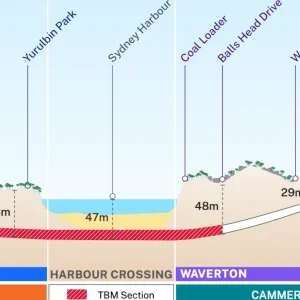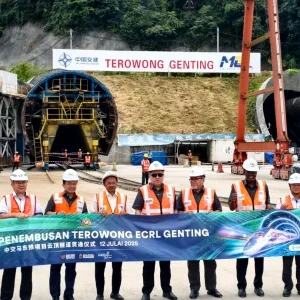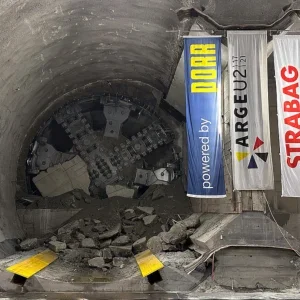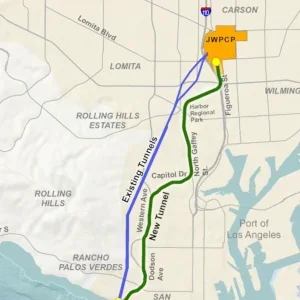Police are investigating a possible sabotage attack on the Hallandsås railway tunnel project in Sweden, which has led to the pollution of a small river and the death of hundreds of fish.
On 22 July 2003, cement and bentonite clay leaked into a creek on the Hallandsås ridge. Engineers nearby were testing different methods of ground treatment when the incident occurred.
A Skanska/Vinci Joint Venture will continue the construction of the 8.6km long twin-tube Hallandsås rail tunnel, as soon as the Environmental Supreme Court gives the go-ahead, which looks likely to be before the end of this year. (The project was originally halted in 1997 when chemicals used to seal the tunnel leached into the water table, poisoning cattle.)
Sub-contractor, Bachy Soletanche was test drilling in the Möllebäcks Zone – a section of ground with fractured rock and high groundwater pressure – to evaluate the best method for treating the ground, to be bored by a 10.5m diameter TBM.
Two methods were being tested. The first is ground freezing, where 800 boreholes will be drilled from the surface. The second is a pilot tunnel from where boreholes can be drilled horizontally – this is the method that was being tested on 22 July.
Engineers are not sure how much cement and bentonite clay leaked out, but the impact led to the death of all the fish in a 4km stretch of river.
A clean-up operation was immediately put in place by the regional government, Banverket (the Swedish Rail Authority) and Skanska/ Vinci. It is believed the stream will be back to normal within two years.
Apparently, there were no signs of leakage from the drill site, which was some 100m from the emission point. “We don’t know if the test drilling was the cause of the problem,” Skanska spokesman, Peter Gimbe, said. “It is very serious, especially because of the history of the project. If it was another project, then it wouldn’t be as serious as it is now.”
A control programme had already been set up to prevent damage to the environment on this project. It is believed that the environmental monitors cannot see a connection between the test site and the emission point.
Theories as to the cause of the leak include transmission by a deep fracture in the rock, or sabotage.
Formally these events should not have an impact on the decision of the Environmental Supreme Court. They are interested in the volume of water that will be discharged as a result of the tunnel’s construction.
Gimbe is positive about the continued good relationship between Skanska and Banverket. “We took part in the clean-up, and in the investigation together. I don’t think the relationship has been affected.”
This incident follows events about a week earlier when local residents reported seeing “a certain cloudiness” in a nearby stream, after a flood at another test drilling site.
See also: T&TI, June 2003; March 2003; and December 2002.







